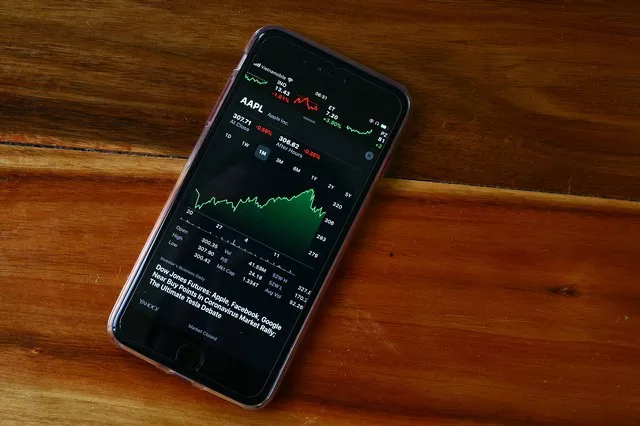Forecasting future stock prices is a complex yet essential task for investors, traders, and financial analysts. Accurate predictions can help individuals make informed investment decisions and capitalize on potential opportunities. While predicting future stock prices with absolute certainty is impossible, there are several methods and factors that can guide these predictions.
1. Historical Stock Price Analysis
One fundamental approach to calculating future stock prices is by analyzing historical stock price data. This method involves examining past price movements, trends, and patterns to make informed predictions about future price movements.
Trend Analysis: Identifying long-term trends in a stock’s price can provide insights into its future direction. For instance, an upward trend may suggest that the stock is likely to continue appreciating, while a downward trend may indicate the opposite.
Support and Resistance Levels: Analyzing support (price levels where a stock tends to find buying interest) and resistance (price levels where selling interest is prevalent) can help identify potential price turning points in the future.
Moving Averages: Using moving averages, such as the 50-day or 200-day moving average, can help smooth out price fluctuations and identify trends. Crossovers of different moving averages can signal potential buy or sell opportunities.
2. Fundamental Analysis
Fundamental analysis involves evaluating a company’s financial health, performance, and external factors that may impact its stock price. This method aims to determine the intrinsic value of a stock, which can then be compared to its current market price to assess whether it is overvalued or undervalued.
Earnings and Revenue Growth: Analyzing a company’s historical and projected earnings and revenue growth can provide insights into its future potential. Companies with strong growth prospects may see their stock prices rise.
Profitability Ratios: Evaluating profitability ratios, such as the price-to-earnings (P/E) ratio and return on equity (ROE), can help assess a company’s financial health and its stock’s valuation relative to its earnings and equity.
Market Sentiment: Monitoring market sentiment and news related to a company or industry can influence stock prices. Positive sentiment can lead to buying pressure, while negative sentiment can result in selling pressure.
3. Technical Analysis
Technical analysis involves studying charts, indicators, and patterns to predict future stock price movements. Traders and analysts use various technical tools to make informed decisions.
Chart Patterns: Recognizing chart patterns like head and shoulders, double tops, and flags can help predict potential price reversals or continuations.
Oscillators: Oscillators like the Relative Strength Index (RSI) and the Moving Average Convergence Divergence (MACD) can help identify overbought or oversold conditions, signaling potential price reversals.
Volume Analysis: Analyzing trading volume can provide insights into the strength of price movements. High trading volume accompanying a price increase may indicate bullish sentiment.
4. Valuation Models
Valuation models attempt to estimate the intrinsic value of a stock by considering various financial metrics and assumptions. These models help investors determine whether a stock is overvalued or undervalued.
Discounted Cash Flow (DCF): DCF analysis estimates the present value of a company’s future cash flows. By discounting expected cash flows to their present value, analysts can determine the stock’s fair value.
Price-to-Earnings (P/E) Ratios: Comparing a company’s P/E ratio to industry averages or historical levels can provide insights into whether the stock is overpriced or underpriced.
Dividend Discount Model (DDM): DDM estimates a stock’s fair value based on its expected future dividend payments. This model is particularly relevant for dividend-paying stocks.
5. Sentiment Analysis
Sentiment analysis involves assessing market sentiment and investor psychology to predict future stock prices. It considers factors like news sentiment, social media chatter, and market sentiment indicators.
News Sentiment: Tracking news sentiment can help gauge how positive or negative news articles are about a company. A surge in negative news may lead to a drop in stock prices.
Social Media and Online Forums: Monitoring social media platforms and online forums can provide insights into retail investors’ sentiments and potential market-moving discussions.
Market Sentiment Indicators: Sentiment indicators like the VIX (Volatility Index) and the Put/Call Ratio can help assess overall market sentiment and potential market direction.
6. Economic and Macro Factors
Economic and macroeconomic factors can significantly influence stock prices. Understanding these factors and their potential impact on the stock market is crucial for predicting future stock prices.
Interest Rates: Changes in interest rates can affect borrowing costs, corporate earnings, and investor preferences for different asset classes.
Economic Indicators: Monitoring economic indicators such as GDP growth, inflation rates, and unemployment rates can provide insights into the overall health of the economy and its impact on stock prices.
Geopolitical Events: Political developments, trade tensions, and global conflicts can create uncertainty in financial markets, impacting stock prices.
7. Limitations of Predicting Future Stock Prices
While these methods and factors can be valuable for predicting future stock prices, it’s important to acknowledge their limitations:
Market Uncertainty: Financial markets are influenced by a multitude of factors, some of which may be unpredictable or subject to sudden changes.
Behavioral Biases: Investor sentiment and behavioral biases can lead to irrational market movements that do not align with fundamental or technical analysis.
Black Swan Events: Rare and unexpected events, often referred to as “black swan” events, can have a profound impact on stock prices and may not be foreseeable.
Data Accuracy: Predictions rely on historical and current data, which may contain errors or inaccuracies.
Conclusion
Predicting future stock prices is a complex and multifaceted task that combines various methods, analyses, and factors. While no method can provide absolute certainty, a combination of fundamental analysis, technical analysis, sentiment analysis, and economic factors can help investors and analysts make informed decisions and improve their understanding of potential market movements. In the ever-evolving world of finance, mastering the art of calculating future stock prices is an ongoing journey that requires diligence, research, and adaptability to changing market conditions.


